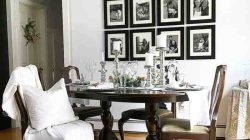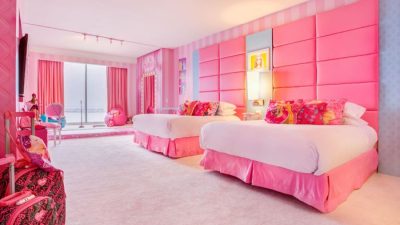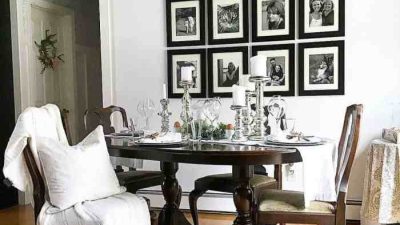Lighting and Ambiance
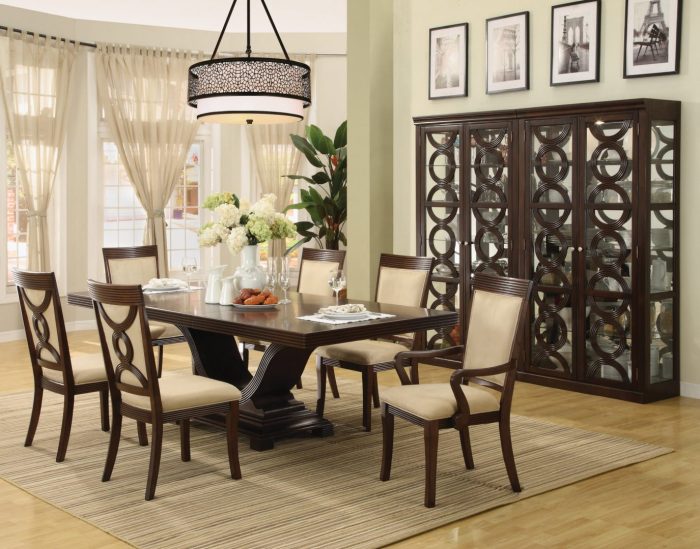
Ideas for dining room table decor – Setting the right mood in your Jogja-style dining room is all about the lighting. It’s more than just illumination; it’s about creating a space that feels both welcoming and stylish, reflecting your personality and the vibe you want to cultivate. Think of it as the soundtrack to your meals – the perfect accompaniment to laughter, conversation, and delicious food.
Three Lighting Schemes for Different Dining Room Moods
Different lighting schemes dramatically alter the atmosphere of your dining space. Consider these three approaches to achieve the perfect ambiance for various occasions. An intimate setting might call for soft, warm lighting, while a festive gathering needs brighter, more energetic illumination. A casual everyday meal requires something comfortable and relaxed in between.
- Intimate: Imagine a romantic dinner for two. Low-level lighting, perhaps from a single, strategically placed pendant lamp with a warm-toned bulb (2700K or lower), creates a cozy, intimate atmosphere. Dimmable lights are key here, allowing you to adjust the brightness to your preference.
- Festive: A celebratory dinner with friends and family demands a brighter, more energetic setting. A statement chandelier, perhaps with multiple light sources, combined with strategically placed uplights to highlight architectural features, would create a vibrant and festive ambiance. Think brighter bulbs (around 3000K) to add energy to the space.
- Casual: For everyday meals, a balance is needed. A combination of recessed lighting for general illumination, plus a stylish pendant light above the dining table (with a 2700-3000K bulb), offers a relaxed and functional setting. This provides both task lighting and ambient illumination without being overly bright or dim.
A Comprehensive Lighting Plan for Optimal Dining
A well-designed lighting plan incorporates three key elements: ambient, task, and accent lighting. Each plays a crucial role in creating a versatile and enjoyable dining experience.
- Ambient Lighting: This provides overall illumination for the room. Recessed lighting or a stylish ceiling fixture is ideal for this. It sets the general tone and mood.
- Task Lighting: This focuses light directly on the dining table, ensuring everyone can see their food and each other clearly. A pendant light or chandelier directly above the table is perfect for this. It’s functional and improves visibility.
- Accent Lighting: This highlights specific features, adding depth and visual interest. Sconces on the walls, strategically placed to highlight artwork or architectural details, can dramatically enhance the dining room’s aesthetic appeal. It adds personality and style.
Impact of Different Lighting Fixtures on Aesthetic, Ideas for dining room table decor
The choice of lighting fixture significantly impacts the overall style and feel of your dining room. Different fixtures lend themselves to various aesthetic approaches.
- Chandeliers: These create a dramatic focal point, often associated with elegance and grandeur. A modern chandelier with geometric designs can add a contemporary touch to a Jogja-style space, while a more traditional chandelier can lend a sense of classic sophistication.
- Pendant Lights: These offer a more versatile and less formal option than chandeliers. They can be used singly or in groups to create a customized look, complementing various styles from minimalist to bohemian. They’re adaptable and easy to integrate.
- Sconces: Wall-mounted sconces provide soft, ambient lighting and can add a touch of warmth and intimacy. They’re particularly effective in highlighting artwork or architectural features. They offer a stylish and practical solution.
Creative Candle Incorporation in Dining Room Lighting
Candles add a touch of romance and warmth that no electric light can fully replicate. Here are three creative ways to incorporate candles into your lighting design.
- Clustered Candles: Group varying heights and sizes of candles on the dining table in elegant candle holders. This creates a visually appealing centerpiece and adds a warm, flickering glow.
- Floating Candles: Place unscented floating candles in shallow bowls or wide glass containers filled with water. This adds a unique, ethereal touch, especially effective for intimate dinners.
- Candle Lanterns: Use decorative lanterns to house candles, creating a soft, diffused light that adds a touch of rustic charm or bohemian flair, depending on the lantern’s style. This adds a layer of visual texture and warmth.
Decorative Accents and Details: Ideas For Dining Room Table Decor
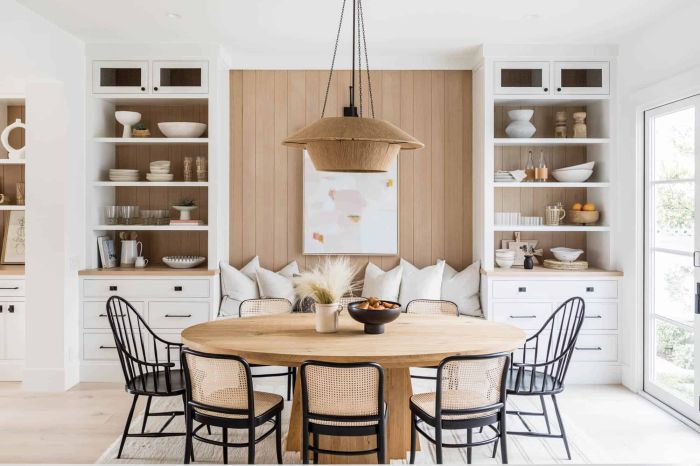
Adding personality to your dining room table in a contemporary Jogja style means blending modern aesthetics with the city’s vibrant culture. Think clean lines, natural materials, and pops of color inspired by traditional Javanese art and design. The right decorative accents can transform your dining space into a place where memories are made and shared.
Strategic placement of decorative items is key to achieving a balanced and visually appealing table setting. Overcrowding can make the space feel cluttered, while a sparse arrangement might feel sterile. Finding that sweet spot requires careful consideration of the size and shape of your table, as well as the overall style you’re aiming for.
Five Decorative Accents for a Contemporary Jogja Dining Table
These five accent pieces offer a blend of functionality and visual interest, perfectly suited to a modern Jogja dining space.
- A low, wide ceramic bowl filled with smooth river stones in varying shades of grey and brown. The natural texture contrasts beautifully with a sleek wooden table, creating a calming focal point. Placement: Center of the table, perhaps under a simple floral arrangement.
- A small, handcrafted wooden sculpture depicting a traditional Javanese motif, like a wayang kulit character. This adds a touch of local artistry without being overpowering. Placement: A corner of the table, slightly offset from the center.
- A set of three vintage batik-print coasters. These add a pop of color and cultural significance. Placement: Underneath glasses or mugs.
- A slender glass vase filled with a single branch of dried flowers or pampas grass. The minimalist design complements the contemporary style. Placement: A side of the table, balancing the wooden sculpture.
- A collection of small, hand-painted ceramic teacups arranged in a semi-circle. These could be used for tea or simply displayed as decorative accents. Placement: One end of the table, near the serving area.
Thematic Decoration: A Bohemian Jogja Vibe
A bohemian theme evokes a sense of relaxed sophistication and global influences, perfect for reflecting Jogja’s eclectic spirit. The selection process involves choosing items that reflect natural textures, warm colors, and handcrafted details.
For instance, we might choose a woven placemat made from natural fibers like jute or sisal. This forms the base, adding texture and warmth. Then, we might incorporate a ceramic vase with a hand-painted floral design, reminiscent of traditional Indonesian pottery. A few carefully selected succulents in small terracotta pots add a touch of greenery and life. Finally, a small hand-woven tapestry featuring geometric patterns could be draped over the back of a chair, subtly enhancing the bohemian atmosphere.
The arrangement would be loose and organic, rather than rigidly structured, reflecting the free-flowing nature of the bohemian style.
Incorporating Personal Photos and Artwork
Personal photos and artwork can add a deeply personal touch to your dining room, but it’s crucial to avoid clutter. Instead of a large gallery wall, consider a single, thoughtfully chosen framed photograph or a small collection of miniature prints displayed on a narrow shelf or ledge near the dining table. Alternatively, a single, large piece of artwork with a calming and sophisticated design can serve as a beautiful focal point, adding character and a touch of personal expression without overwhelming the space.
Creating a welcoming dining room atmosphere starts with the table. For a festive touch, consider themed centerpieces; perhaps autumn leaves in fall or a whimsical arrangement for a birthday. If you’re looking for spooky savings, check out these amazing deals on halloween outdoor decor on sale – some pieces might even inspire unique dining room table decor ideas! Then, bring those inspiring elements back inside to complete your dining room’s ambiance.
Using Different Textures for Visual Interest
Mixing textures is a simple yet effective way to elevate the visual appeal of your dining table. The contrast between smooth glass, rough-hewn wood, and the cool sheen of metal creates a dynamic and interesting tablescape. For example, a wooden charger topped with a glass dinner plate, accompanied by metal cutlery, introduces a delightful interplay of textures. This layered approach adds depth and sophistication without requiring a lot of additional decorative elements.
This is especially effective when combined with the aforementioned decorative accents, such as the ceramic bowl and wooden sculpture, further enhancing the overall visual impact.
Table Setting and Place Card Ideas
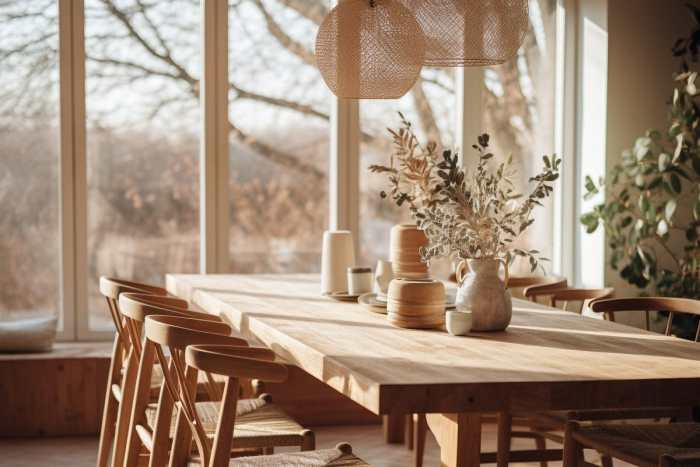
Setting a stunning table is all about creating a vibe that matches the occasion and reflects your personal style. In Jogja, we love a blend of modern and traditional, so let’s explore some options that capture that unique aesthetic. Think earthy tones, handcrafted details, and a touch of unexpected elegance.
Casual Dinner Table Setting
For a casual weeknight dinner with friends, a relaxed and inviting atmosphere is key. A simple linen tablecloth in a natural color like beige or cream provides a neutral base. Use mismatched ceramic plates in earthy tones – think terracotta, olive green, or warm browns – to add visual interest. Wooden chargers add a rustic touch, while simple silverware and glasses complete the setting.
Instead of formal place cards, small handwritten notes on pieces of recycled paper tied with twine would add a personal touch. The overall feel should be effortlessly chic and comfortable.
Formal Dinner Party Table Setting
A formal dinner party calls for a more sophisticated approach. A crisp white tablecloth provides a clean backdrop, complemented by elegant chargers in silver or gold. Use your finest china, opting for a classic white or a subtle pattern. Crystal glassware adds a touch of glamour, while polished silverware elevates the formality. Place cards are essential for a formal setting, and you could create elegant ones using calligraphy on thick cardstock with a subtle gold or silver edge.
The overall ambiance should be refined and elegant, reflecting the special occasion.
Holiday Celebration Table Setting
For a festive holiday celebration, embrace the season’s colors and themes. A vibrant tablecloth in a rich jewel tone, such as emerald green or ruby red, sets the mood. Use festive china with holiday-themed patterns or accents. Consider adding natural elements like pine cones, cranberries, or sprigs of holly as centerpieces. Place cards can be crafted from festive materials like patterned paper or wood slices, incorporating holiday motifs.
The overall aesthetic should be cheerful and celebratory, reflecting the joyous spirit of the occasion.
Place Card Designs
Creating unique place cards adds a personal touch to any table setting. The design should complement the overall style of the event.
Calligraphy Place Cards
Elegant and timeless, calligraphy place cards can be created using a fine-tipped pen and high-quality cardstock. Choose a sophisticated font and consider adding a subtle embellishment, such as a small flourish or a delicate illustration. The overall effect is refined and personalized.
Hand-Painted Place Cards
For a more artistic approach, hand-painted place cards allow for greater creativity. Use watercolor paints or acrylics to create unique designs on small pieces of cardstock or even smooth stones. Incorporate festive patterns or personalized illustrations. This option offers a personalized and artistic touch.
Printed Place Cards
For a more modern aesthetic, printed place cards offer a clean and consistent look. Use high-quality cardstock and a professional printing service to create crisp and visually appealing place cards. Incorporate custom designs or monograms for a personalized touch. This option offers a polished and modern feel.
Formal Table Setting Etiquette
Proper table setting etiquette is essential for formal occasions. Silverware is placed in the order of use, from the outside in. Glasses are arranged in a similar manner, with water glasses typically placed above the knives. Napkins are placed on the plate or to the left of the forks. Place cards should be placed above the dinner plate or at the top of the place setting.
Understanding and adhering to these conventions creates a polished and respectful dining experience.
Visually Appealing Table Settings
Creating a visually appealing table setting involves careful consideration of color coordination and pattern mixing. Start with a neutral base, such as a solid-colored tablecloth, and add pops of color through napkins, plates, or centerpieces. Mix patterns subtly, using one or two complementary patterns to add visual interest without overwhelming the setting. Ensure a balance between textures and elements to create a cohesive and aesthetically pleasing arrangement.
For instance, a rustic wooden charger paired with sleek silverware and delicate china creates a balanced and visually interesting table setting.
FAQ Resource
What are some budget-friendly ways to decorate my dining room table?
Repurpose everyday items like jars, books, or branches as centerpieces. Utilize affordable fabrics like cotton or linen for table runners and placemats. Incorporate thrifted or vintage items to add unique character.
How can I choose the right lighting for my dining room table?
Consider the desired ambiance. Warm, soft lighting is ideal for intimate dinners, while brighter lighting suits casual gatherings. A combination of ambient, task, and accent lighting provides optimal illumination and visual interest.
How often should I change my dining room table decor?
The frequency depends on personal preference. Seasonal changes are a popular approach, while others might update their decor for specific events or holidays. Even small changes, such as switching out placemats or adding a new centerpiece, can refresh the look.




